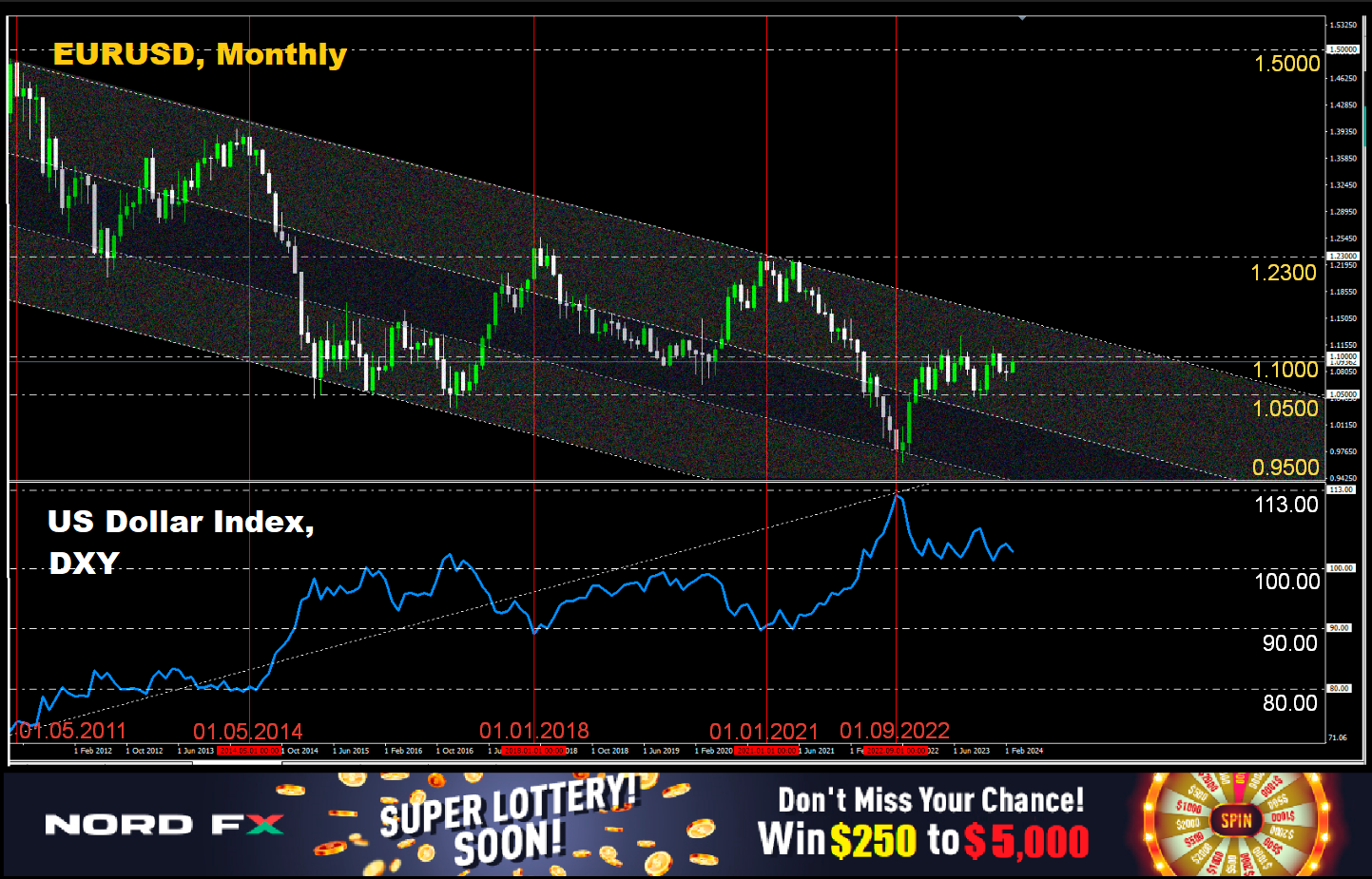EUR/USD: A Bad Week for the Dollar

● The past week was dominated by the European Central Bank (ECB)’s meeting on Thursday, 7 March. As anticipated, the pan-European regulator decided to maintain its current monetary policy, leaving the interest rate unchanged at 4.50%. This move reaffirmed its commitment to steering inflation into the desired range. The ECB aims to be absolutely certain that inflation is consistently moving towards its 2.0% target, which currently stands at 2.6%.
According to analysis from ANZ Bank, a reduction in euro rates is expected in Q2. “Our interpretation of current ECB official guidance is that hawks are on the rise and prefer to wait for more detailed wage growth data before initiating a rate cut. We believe a consensus will be reached in June,” ANZ economists wrote.
This expectation was echoed by Gediminas Šimkus, a member of the ECB Governing Council and head of Lithuania’s central bank, on Friday, 8 March. He stated that “all conditions are set for a transition to a less stringent monetary policy, with a rate cut in June being very likely. While a cut in April cannot be ruled out, the likelihood is low.” He added that there is no reason to reduce the rate by more than 25 basis points in one go.
● It’s important to note that the Federal Reserve usually acts more aggressively than the ECB, changing its rate more frequently and with greater amplitude. To see this, one only needs to look at the statistics from the last 10 years. According to analysts at Commerzbank, this means that if both central banks start their easing cycles at the same time, the dollar rate could very quickly fall below the euro rate, which would support an increase in the EUR/USD exchange rate.
However, what the cycles will look like this time remains unclear. The CME FedWatch Tool estimates a 56% probability of a Federal Reserve rate cut in June. Yet, speaking to the US Congress on 6-7 March, Fed Chair Jerome Powell only vaguely stated that the regulator would ease monetary policy “at some point this year”.
A statement by Loretta Mester, president of the Federal Reserve Bank of Cleveland, proved to be more interesting. Speaking at the European Centre for Economics and Finance, she expressed concerns about the continued steady decrease in inflation throughout the year. Therefore, in Mester’s view, it would be appropriate to keep the rate at its current level of 5.50%. The head of the Federal Reserve Bank of Cleveland also suggested that if economic conditions align with forecasts, the likelihood of a rate cut towards the end of the year might increase.
● Regarding the macroeconomic statistics released last week, Eurostat’s final assessment showed that the Eurozone economy grew by 0% in quarterly terms over the last three months of 2023. Year-on-year, GDP increased by 0.1%. Both figures matched preliminary estimates and market expectations, thus having no impact on the exchange rates.
Throughout the week, the dollar was under pressure, and not just due to Jerome Powell’s “dull” Congressional testimony. US macroeconomic reports appeared relatively weak. For instance, the ISM Services Sector Business Activity Index for February fell from 53.4 points to 52.6 points. Manufacturing orders in January also dropped by 3.6%, which was worse than the 2.9% forecast. The number of job openings (JOLTS) in the US last month was 8.863 million, down from 8.889 million the previous month, and initial unemployment claims for the week ending on 2 March rose to 217K, exceeding the 215K forecast. All these factors together led to the EUR/USD pair moving out of the narrow range of 1.0800-1.0865, in which it had been trading since 20 February, and rising to the 1.0900 mark.
● Labour market statistics released on Friday, 8 March, could have supported the dollar, but this did not happen, even though the market’s reaction was somewhat puzzling. On one hand, the number of new jobs created outside of the agricultural sector (NonFarm Payrolls) was 275K, significantly exceeding both the previous figure of 229K and the forecast of 198K. Typically, such indicators would push the EUR/USD pair down. However, this time, it sharply rose instead. This likely relates to the unemployment rate increasing from 3.7% to 3.9% (with a forecast of 3.7%) and the average hourly earnings showing a sharp drop from 0.5% (month-over-month) to 0.1% (against a forecast of 0.2%). It seems the last two indicators outweighed the positive effect from the NFP. Market participants decided that these would be additional arguments in favour of a more imminent interest rate cut, resulting in EUR/USD soaring to 1.0980.
● Subsequently, the excitement settled, and EUR/USD closed at 1.0937. As for the short-term outlook, as of the evening of Friday, 8 March, 35% of experts were in favour of the dollar strengthening and the pair falling, while 65% sided with the euro. Trend indicators and oscillators on the D1 chart are 100% coloured in green, with a quarter of the latter in the overbought zone. The nearest support levels for the pair are situated in the 1.0845-1.0865 zone, followed by 1.0800, then 1.0725, 1.0680-1.0695, 1.0620, 1.0495-1.0515, and 1.0450. Resistance zones are located around 1.0970-1.1015, 1.1050, and 1.1100-1.1140, up to 1.1230-1.1275.
● The upcoming week is expected to be quite tumultuous. Significant volatility can be anticipated on Tuesday, 12 March, with the release of consumer inflation (CPI) data in Germany and the USA. On Thursday, 14 March, retail sales statistics and the Producer Price Index (PPI) in the United States will be announced. The week will conclude with the publication of the University of Michigan Consumer Sentiment Index on Friday, 15 March.

Notice: These materials are not investment recommendations or guidelines for working in financial markets and are intended for informational purposes only. Trading in financial markets is risky and can result in a complete loss of deposited funds.
#eurusd #gbpusd #usdjpy #Forex #forex_forecast #signals_forex #cryptocurrency #bitcoin #nordfx
https://www.mql5.com/en/blogs/post/756595″>
#Forex #Cryptocurrencies #Forecast #March
